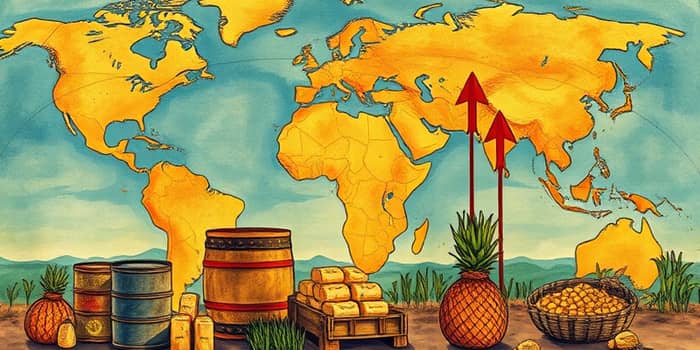
The commodity markets have weathered historic ups and downs in recent years, and 2025 may mark the beginning of a new recovery. As global demand forecasts shift upward, investors and producers alike are watching for signs of stabilization and growth.
In this comprehensive overview, we explore the cyclical nature of commodity prices, dissect the interplay of economic forces, and chart the potential path forward for key sectors.
The past half-decade saw extraordinary swings in commodity prices. Following the pandemic rebound of 2020, markets grappled with supply shocks like Russia’s invasion of Ukraine, and inflationary pressures pushed costs skyward.
By early 2025, however, the tide had turned. Analysts project a 12% drop in overall prices for the year, followed by a further 5% decline in 2026, aligning values with levels not seen since 2020.
Despite this correction, it’s crucial to note that nominal commodity prices remain above pre-pandemic benchmarks, even if inflation-adjusted figures have slipped below the 2015–2019 average for the first time in years.
Understanding the magnitude of change requires a close look at the main categories:
This table underscores the divergent pressures across sectors: energy products have borne the brunt of declines, while metals showed a brief uptick before easing back.
At the heart of recent declines lie three fundamental forces:
Yet, the narrative is shifting. Major banks now flag forecasts for demand recovery in the second half of 2025, driven by restocking efforts, infrastructure spending, and renewed manufacturing momentum outside China.
The interplay between central bank policy and commodity prices remains crucial. US inflation slowed but stayed above target, with core CPI at 3.2% year-over-year in December 2024. This feeds into input costs and keeps price support alive for some commodities.
Meanwhile, a strong US dollar makes dollar-denominated commodities pricier for foreign buyers, dampening demand. The Federal Reserve’s rate stance will thus be a key variable as markets look for signals of policy easing.
Global politics can swiftly upend supply and demand dynamics:
Each of these factors introduces both upside opportunities and downside risks, highlighting the continued volatility expected through 2026.
Not all commodities move in unison. Sector dynamics vary based on underlying demand drivers and supply conditions:
The outlook for commodities hinges on the balance between lingering headwinds and emerging demand catalysts. Key considerations include:
Downside risks could extend the current downturn, but a synchronized recovery in major economies, combined with strategic stockpiling and policy stimulus, may deliver a durable upswing in prices by late 2025.
The commodity market’s journey from pandemic-driven peaks to the lows of early 2025 underscores its cyclical nature. While recent price trends have been discouraging, the shifting demand outlook offers a beacon of hope for producers, consumers, and investors.
Staying attuned to policy actions, geopolitical developments, and sectoral trends will be critical. As global momentum rebuilds, a thoughtful strategy that balances risk management with opportunistic positioning can help stakeholders harness the potential rebound.
Ultimately, the story of 2025 and beyond will be one of adaptation and resilience—qualities that define both markets and the people who navigate them.
References













